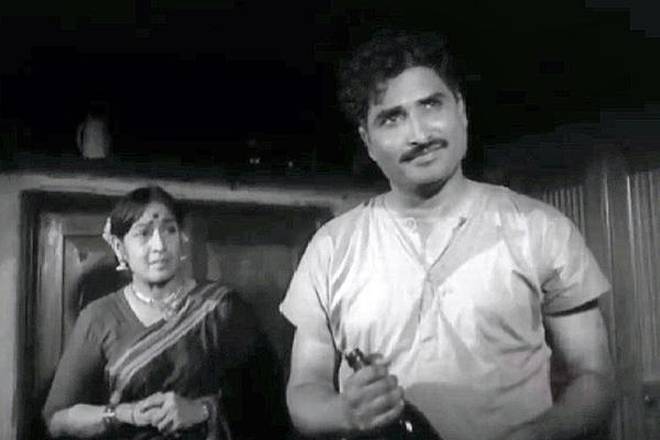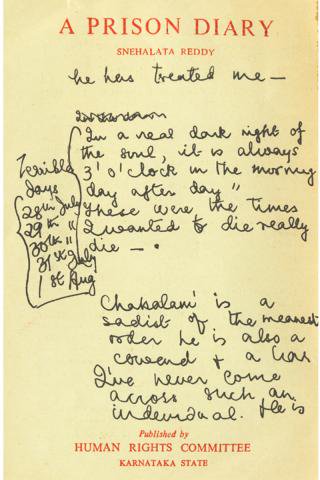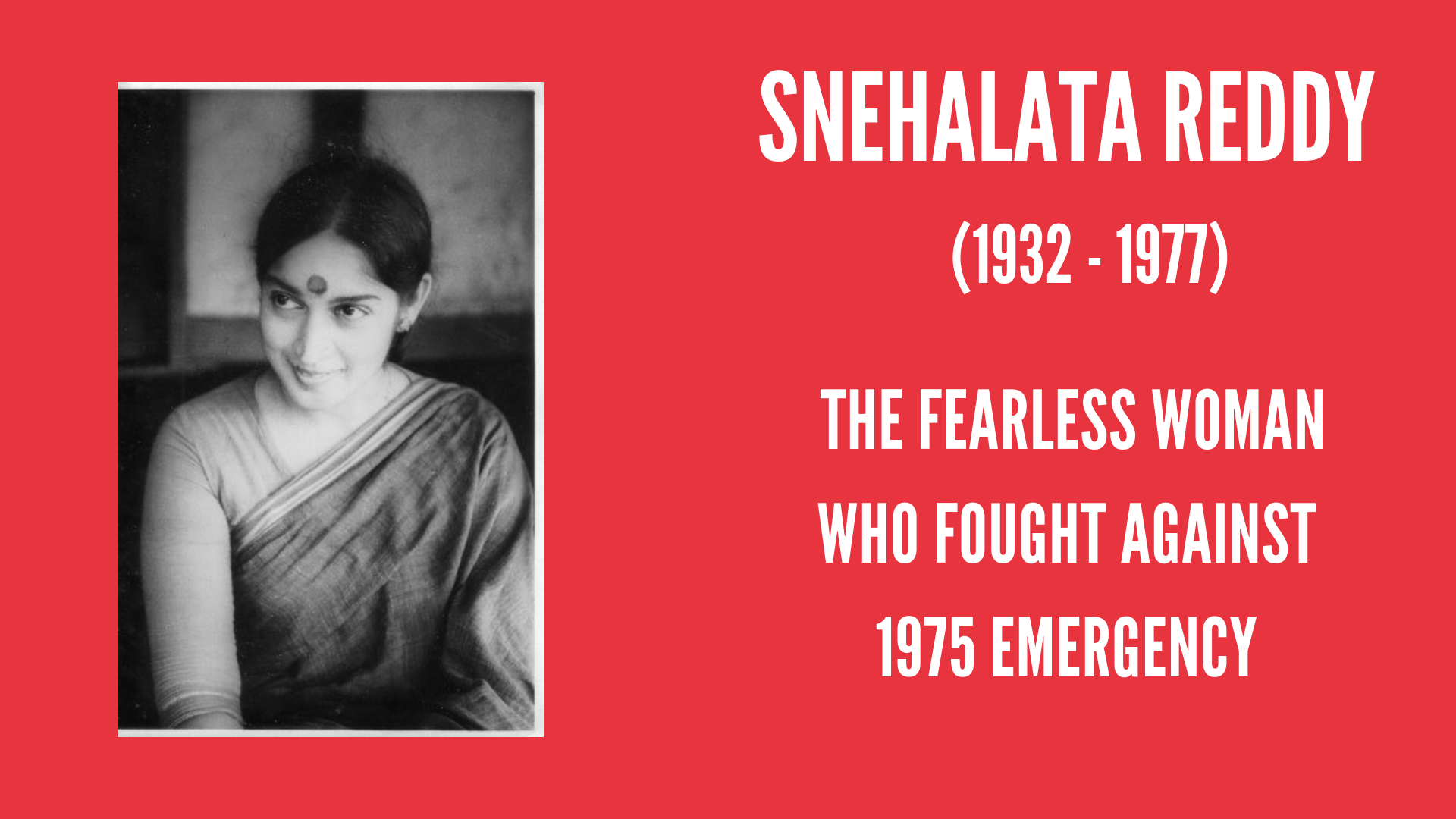Multi-talented actress and a fearless voice of dissent, Snehalata Reddy devoted her entire life to art and activism. She is revered for her unconditional commitment to democratic values and non-violent resistance.
Early Life
Snehalata Reddy (1932-1977) was born in Andhra Pradesh, India to second generation Indian Christian converts. When she grew up, she embraced her career in theatre as an actor, writer, producer and director. She made valuable contributions to the theatre movement in Chennai. She also had an inclination towards dancing and became a proficient Bharatnatyam dancer under the tutelage of Sri Kittappa Pillai.
Later in life, she married to the poet, mathematician and noted film director Pattabhai Rama Reddy. Along with her husband, she became an active participant in the anti-emergency movement in India. Because of her involvement in the movement and her friendships with socialists leaders, she roused political suspicions and was imprisoned in 1976. Her health deteriorated significantly during her time in prison and she lost her life at the age of 44 because of the deplorable conditions of the prison.
Snehalata Reddy is remembered as one of the first martyrs of the 1975 emergency. Her relentless compassion and tranquil rebellion continues to be an inspiration for change makers.
Her Theatrical Journey
During her life, Snehalata Reddy was a well-known face of Kannada cinema, Kannada Theatre, Telugu cinema and Telugu Theatre. She was also the co-founder of The Madras Players, oldest English-language theatre group in Chennai.
In his special tribute to Snehalata, critically acclaimed Kannada author UR Ananthamurthy wrote, “Sneha was also the moving spirit behind the theatre movement in Madras and became the centre of artistic and political activities when she and her family settled down in Bangalore. She was imaginative in whatever she did — whether it was a play she directed, or a role she played, or a room she decorated, or the way she entertained people without a fuss.”
Snehalata Reddy is remembered as one of the first martyrs of the 1975 emergency. Her relentless compassion and tranquil rebellion continues to be an inspiration for change makers.
As a theatre artist, Sneha acted, directed and produced memorable plays such as A View From The Bridge and The House of Bernarda Alba. But she came in the public eye for her unconventional role in the award-winning Kannada film Samskara which was released in 1970. The movie was a critique of the caste dynamics in India and received a lot of backlash for its anti-caste message. Initially, the movie was banned by Madras censor board. Snehalata and her husband fought hard for the release of the film, and the ban was later revoked.

Image source: The Hindu
Sneha’s progressive outlook reflected in her work as she always tried to break away from the norms in the roles she acted or the plays she wrote. She played the unconventional role of a prostitute in UR Ananthamurthy’s Samskara. Her feminist convictions were also visible in a play written by her called Seema in which she questions male entitlement.
Political Activism
Snehalata Reddy was someone who asserted her Indianness. Sneha had a strong dislike for Britishers and abhorred anything that reminded her of colonial rule, this was the reason that she reverted to her Indian name. She and her husband were staunch socialists and were greatly influenced by the ideology of Dr. Rammanohar Lohia, the renowned socio-economic ideologue and freedom fighter.
She along with her husband fiercely fought against the 1975 Emergency imposed by the then Prime Minister Indira Gandhi. Like several intellectuals of the time, they saw the Emergency as highly undemocratic. It is considered as the darkest chapter in the political history of India, where the right to dissent of individuals was snatched from them and the dissenting individuals were subjected to inhuman treatment.
She along with her husband fiercely fought against the 1975 Emergency imposed by the then Prime Minister Indira Gandhi. Like several intellectuals of the time, they saw the Emergency as highly undemocratic.
Sneha was arrested in 1976 under MISA (Maintenance of Internal Security Act), the much-dreaded law which was created to quell political dissent and granted special powers to the police to arrest anyone without a warrant. She was suspected to be a part of the Baroda Dynamite case along with George Fernandes and was found guilty by mere association. She was kept in the Bangalore Central Jail for eight months without a trial.
Also read: Kondapalli Koteswaramma: Andhra’s Communist Revolutionary Activist | #IndianWomenInHistory
Her Days In The Prison
Her solitary confinement in the prison took a major toll on her mental health. In a journal that she kept with herself in the prison, she wrote, “In a real dark night of the soul, it is always three o’ clock in the morning day after day.”
Despite this, she did not let her compassion and humanitarian spirit waver even for a minute. She worked relentlessly to improve the conditions of her fellow female prison inmates. She taught them games, songs and organised plays for them.

In her diary entry on June 9th, 1976, she wrote, “At Least I have achieved something here. I have stopped the horrible beatings the women prisoners used to get. The food has slightly improved for them. And though the water supply is appalling, yet there are promises for pipes to be connected, and that is not bad at all. And most of all, I have made them unafraid a little. I went on a hunger strike until food improved slightly.”
Declining Health And Death
Though, she was an asthamatic since her childhood, her asthma became chronic because of the deplorable conditions that she was kept in. She was confined in a poorly ventilated and polluted room which further aggravated her condition. She was later released on parole as a result of her failing health. Unfortunately, she passed away five days after release on 20th January, 1977.
Also read: Attia Hosain: A Radical Muslim Writer And Archivist Of The Partition | #IndianWomenInHistory
Snehalata Reddy died fighting for the cause that meant a lot to her. Her fierce compassion is an inspiration for aspiring social activists.
About the author(s)
An English literature graduate who likes to learn different art forms and wishes to create a social impact.





In 1975 emergency she was arrested and brought to Bangalore Central Jail. By then thousands of RSS Swayamsevaks and Samiti Sevikas including me were already in jail! I remember the day, she was crying like a child ! Padma Joshi, Gayatri….. and other RSS ( Samiti) Swayamsevikas were solacing her!! This is very true!!